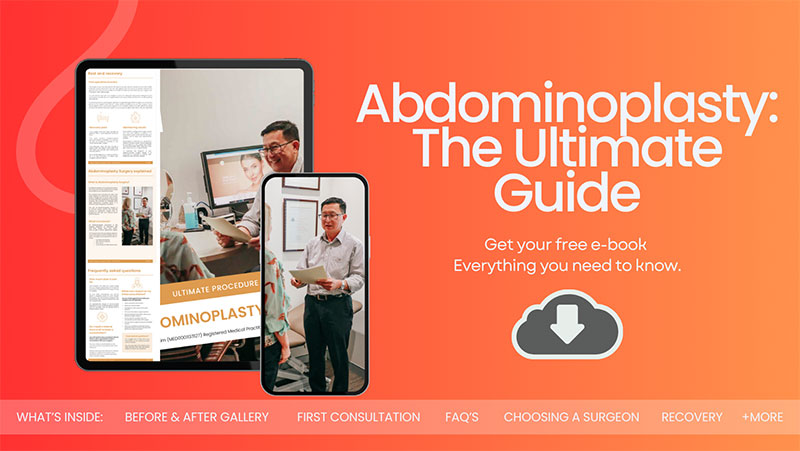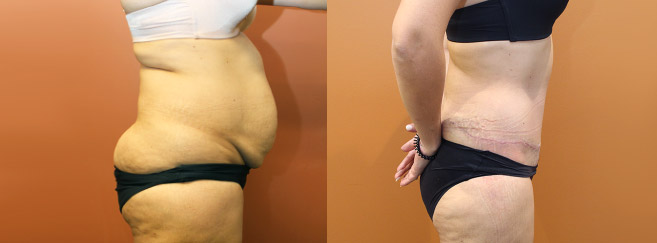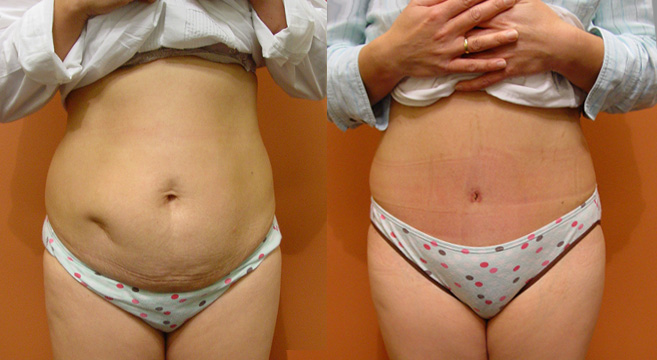Sleep Positions during Recovery after Abdominoplasty
The period following surgery is a time of recovery and adjustment, where the body heals and adapts to the changes. Among the various aspects of post-operative care, sleep plays an important role in the recovery process. Proper rest is essential for healing, as it allows the body to repair itself more effectively. However, finding a comfortable sleeping position after abdominoplasty can be challenging due to the tenderness and sensitivity of the surgical site.
Sydney Specialist Plastic Surgeon Dr Jake Lim offers detailed advice on how to achieve restful sleep during the recovery phase after abdominoplasty. Sleep is not just a period of rest but a critical component of the healing process. Adequate sleep supports immune function, helps manage pain, and can accelerate the healing process. Nevertheless, the discomfort following abdominoplasty may pose a challenge to achieving quality rest.
Download Dr Lim’s Free 2024 Abdominoplasty Guide

How Sleep Affects Healing
During sleep, the body engages in various recovery and regeneration processes, such as muscle repair, tissue growth, and immune system strengthening. This restorative phase is critical for reducing inflammation, managing pain, and promoting faster healing of surgical wounds.
Lack of adequate sleep can impede these natural healing processes, potentially leading to prolonged recovery times and increased susceptibility to infections. Moreover, quality sleep can significantly impact your mood and energy levels, which are vital for a positive recovery experience. Thus, ensuring you get sufficient restful sleep post-surgery is fundamental to your overall recovery.
Sleep Positions after Abdominoplasty
Finding a comfortable sleeping position after abdominoplasty can be particularly challenging. The surgery involves significant alterations to the abdominal area, resulting in discomfort, swelling, and sensitivity. Lying down in your usual sleeping position may not only be uncomfortable but could also strain the surgical site, leading to increased pain or even damage to the sutures.
Additionally, you may experience difficulty sleeping due to anxiety or the side effects of pain medication. Recognising and addressing these challenges is important for ensuring you get the rest needed to support your body’s healing process.
The Semi-Fowler’s Position
The Semi-Fowler’s position is highly recommended for sleeping after abdominoplasty. In this position, you lie on your back with your upper body slightly elevated, typically at a 30 to 45-degree angle. This can be achieved by using a recliner or by arranging several pillows under your head and upper back. The elevation helps reduce swelling by promoting fluid drainage away from the surgical area and decreases the tension on the abdominal sutures, facilitating a more comfortable rest.
How to Arrange Pillows for Support
To create a supportive Semi-Fowler’s position, you will need several pillows or a wedge pillow. Place one or two pillows under your knees to keep them slightly bent; this reduces the strain on your lower back and keeps the abdominal muscles relaxed. Ensure that your head and shoulders are adequately supported by arranging pillows in a way that maintains a comfortable angle for your upper body. The goal is to create a nest-like environment that supports the entire length of your body, from your head down to your knees.
Benefits of the Semi-Fowler’s Position
Adopting the Semi-Fowler’s position can significantly enhance your comfort during the initial recovery phase. This position aids in reducing post-operative swelling and minimises the risk of complications, such as fluid accumulation (seroma) or blood clots (deep vein thrombosis). Moreover, maintaining a slight elevation of the upper body can alleviate discomfort during sleep, making it easier to breathe and facilitating a more restful night.

Sleeping on Your Back
Sleeping flat on your back without elevation is generally not recommended immediately following abdominoplasty. However, as your recovery progresses and with Dr Lim’s approval, you may gradually transition to a less elevated back-sleeping position. Even then, maintaining a slight bend in your knees with the support of pillows can continue to provide comfort and support to your healing abdomen.
Adjusting Pillows for Optimal Support
When transitioning to sleeping on your back, the placement of pillows remains key to your comfort. Continue to use pillows under your knees to alleviate lower back pressure. A small, soft pillow or rolled towel under your lower back can also offer additional support and maintain the natural curve of your spine.
Why This Position is Beneficial
Sleeping on your back in a properly supported manner ensures that your weight is evenly distributed, minimising stress on any single part of your body. This position can be particularly beneficial as it avoids direct pressure on the sides or the surgical incision area, thus preventing unnecessary strain on the healing tissues.
The “No-No” Positions
Certain sleeping positions should be avoided in the weeks following abdominoplasty. Sleeping on your stomach is strongly discouraged, as it places direct pressure on the healing surgical area. Similarly, sleeping on your side can cause uneven strain on your abdomen, potentially affecting the outcome of your surgery. It’s vital to follow Dr Lim’s guidance on when it’s safe to resume these positions.
Tips for a Comfortable Sleep after Abdominoplasty
Sleeping comfortably after abdominoplasty can be a challenge, but with the right strategies and aids, you can enhance your sleep quality and support your recovery. Here are Dr Jake Lim’s tips for a more comfortable rest:
Choosing the Right Mattress and Pillows
The quality of your mattress and pillows plays a significant role in your sleep comfort, especially after surgery. A mattress that provides firm support yet is soft enough to contour to your body can help maintain proper spinal alignment and reduce pressure on your healing abdomen. Consider a mattress with good motion isolation to minimise disturbances from movement during the night.
Pillows are equally important. For post-abdominoplasty sleep, opt for pillows that offer adjustable support, such as those filled with memory foam or microbeads. These materials allow you to customise the shape and firmness of the pillow to suit your needs, ensuring optimal support for your head, neck, and knees.
Pain Management for Better Sleep
Effective pain management is important for comfortable sleep following abdominoplasty. Adhere to Dr Lim’s prescribed pain relief plan, which may include medications and instructions on when to take them to ensure peak effectiveness during the night. Remember, pain control is not just about comfort; it’s about reducing stress on your body to aid in the healing process.
It’s also beneficial to establish a bedtime routine that includes gentle activities to help manage discomfort before sleep. Activities such as reading, listening to soothing music, or practicing relaxation techniques can prepare your mind and body for rest, making it easier to fall asleep despite post-surgical discomfort.

Creating a Restful Sleeping Environment
The environment in which you sleep can significantly affect your ability to rest comfortably. Aim to create a space that promotes relaxation and sleep:
- Maintain a Cool, Comfortable Temperature: A slightly cooler room temperature is conducive to sleep. Use lightweight bedding and adjust room temperature or use a fan to find a comfortable setting.
- Minimise Light and Noise: Use blackout curtains or a sleep mask to block out light, and consider earplugs or a white noise machine to drown out disruptive sounds.
- Limit Screen Time Before Bed: The blue light emitted by screens can interfere with your natural sleep cycle. Limit exposure to TVs, smartphones, and computers at least an hour before bedtime to help signal to your body that it’s time to wind down.
Adapting your sleep environment and habits to accommodate your healing process post-abdominoplasty is key to ensuring that your body gets the rest it needs to recover. Implementing these tips can make a significant difference in your comfort and the overall quality of your sleep during this critical recovery period.
Sleep Challenges Post-Abdominoplasty
The road to recovery after abdominoplasty can sometimes be marked by sleep disturbances. Understanding how to manage these challenges is vital for a restful night’s sleep, which in turn, supports your healing process.
Dealing with Restlessness and Discomfort
Restlessness and discomfort can be significant barriers to achieving quality sleep post-surgery. Here are strategies to manage these issues:
- Adjust Your Sleep Environment: Ensure your bedroom is conducive to rest. This may mean adjusting the room temperature, using softer bedding, or employing ambient noise to create a calming atmosphere.
- Pain Management: Timely and appropriate use of pain medication, as prescribed by Dr Lim, can alleviate discomfort that may keep you awake. Don’t hesitate to communicate with your medical team if you feel your pain is not adequately controlled.
- Mindfulness and Relaxation Techniques: Practices such as deep breathing exercises, progressive muscle relaxation, or guided imagery can help calm your mind and body, making it easier to fall asleep despite restlessness or discomfort.
When to Consult Your Surgeon about Sleep Issues
While sleep disturbances are common during the initial stages of recovery, persistent sleep problems should not be ignored as they can impact your healing process. Here are signs that it might be time to consult your surgeon:
- Persistent Pain: If pain is the primary cause of your sleep disturbances and it does not improve with prescribed medication.
- Changes in Sleep Patterns: An inability to sleep or excessive sleepiness during the day that persists beyond the initial recovery period.
- Breathing Difficulties: Any new or worsening breathing problems during rest could indicate complications and should be assessed by your doctor.
- Emotional Distress: Feelings of anxiety or depression can both contribute to and result from sleep disturbances, and addressing these feelings is an essential part of your recovery.
Seeking medical advice for sleep issues is not just about improving your rest; it’s about ensuring these problems are not symptoms of a more significant complication related to your surgery or recovery.
FAQs about Best Sleep Positions after Abdominoplasty

How soon after abdominoplasty can I sleep flat on my back?
- It is generally recommended to avoid sleeping flat on your back immediately after abdominoplasty. Instead, you should sleep in a slightly elevated position, such as the Semi-Fowler’s position, for the first few weeks following surgery. This helps reduce swelling and tension on the surgical site. Dr Jake Lim will provide specific advice based on your individual recovery, but typically, you may start transitioning to a less elevated back-sleeping position after 4-6 weeks, once you’ve been given the go-ahead during a follow-up consultation.
Can I sleep on my stomach after abdominoplasty?
- Sleeping on your stomach is generally discouraged until you are fully recovered, which could take several months. This position can place undue pressure on your healing abdomen, potentially causing pain or affecting the results of your surgery. Always follow Dr Lim’s specific recommendations, but typically, you will be advised to wait until you experience no discomfort in this position and have received explicit approval during a follow-up visit.
What can I do if I find it difficult to sleep in the recommended positions?
- Difficulty sleeping in recommended positions is common. To enhance your comfort, consider using specialised pillows or adjustable beds to maintain the Semi-Fowler’s position. Engaging in relaxing pre-bedtime routines, such as reading or listening to soft music, can also promote better sleep. If discomfort persists, discuss it with your surgeon, as he may adjust your pain management plan or suggest additional strategies to improve your sleep quality.
How long will I need to maintain special sleep positions after abdominoplasty?
- The duration for maintaining special sleep positions varies among individuals based on the extent of their surgery and their unique recovery process. Most patients are advised to sleep in an elevated position for at least 4-6 weeks. Transitioning back to normal sleep positions should be done gradually and with the approval of your surgeon, who will assess your healing progress. It’s essential to prioritise comfort and avoid any strain on your abdomen during this period.
Further Reading about Abdominoplasty with Sydney Specialist Plastic Surgeon Dr Jake Lim
- Read more about Medicare Cover for Abdominoplasty Surgery in Sydney
- Read more about Abdominoplasty for Men: Breaking Down the Myths
- Read more about Will I Still Have Abdominal Rolls or Folds After Abdominoplasty Surgery?
- Read more about How Your BMI Impacts Abdominoplasty Results
- Read more about Combining Abdominoplasty with Other Procedures
- Read more about Maintaining Abdominoplasty Results with Diet & Exercise
Medical References about Recovery after Abdominoplasty
- Tummy tuck – Mayo Clinic
- What you need to know about your tummy tuck recovery
- Tummy Tuck: What to Expect at Home – MyHealth Alberta
- Tummy Tuck Recovery – American Society of Plastic Surgeons
- Tummy tuck (abdominoplasty) – NHS
About Dr Jake Lim
Highly qualified and experienced specialist plastic surgeon Dr Jake Lim focuses on facial plastic, cosmetic breast and body contouring after significant weight loss
Dr Lim creates the best possible plastic surgery results for his Australia-wide and international patients.
Dr Lim is passionate about making sure each and every patient has access to the right information about available treatments and procedures and is able to make well-informed decisions.
At My Klinik, patient safety, education and achieving optimal results are our top priorities.




